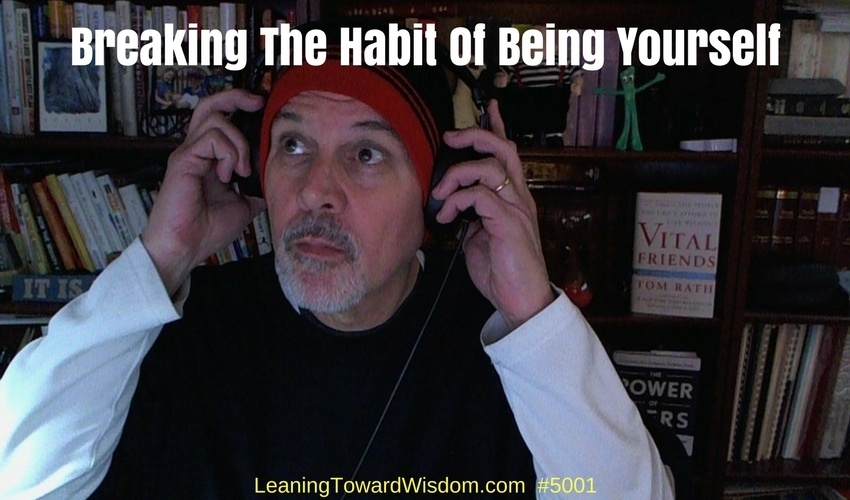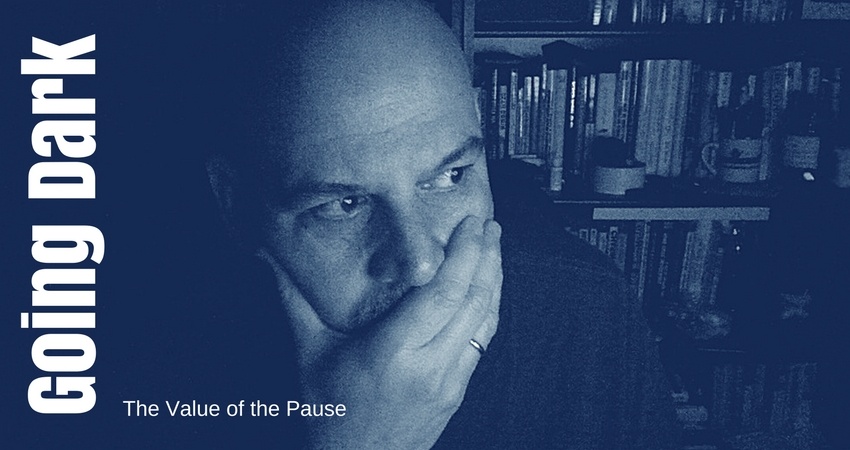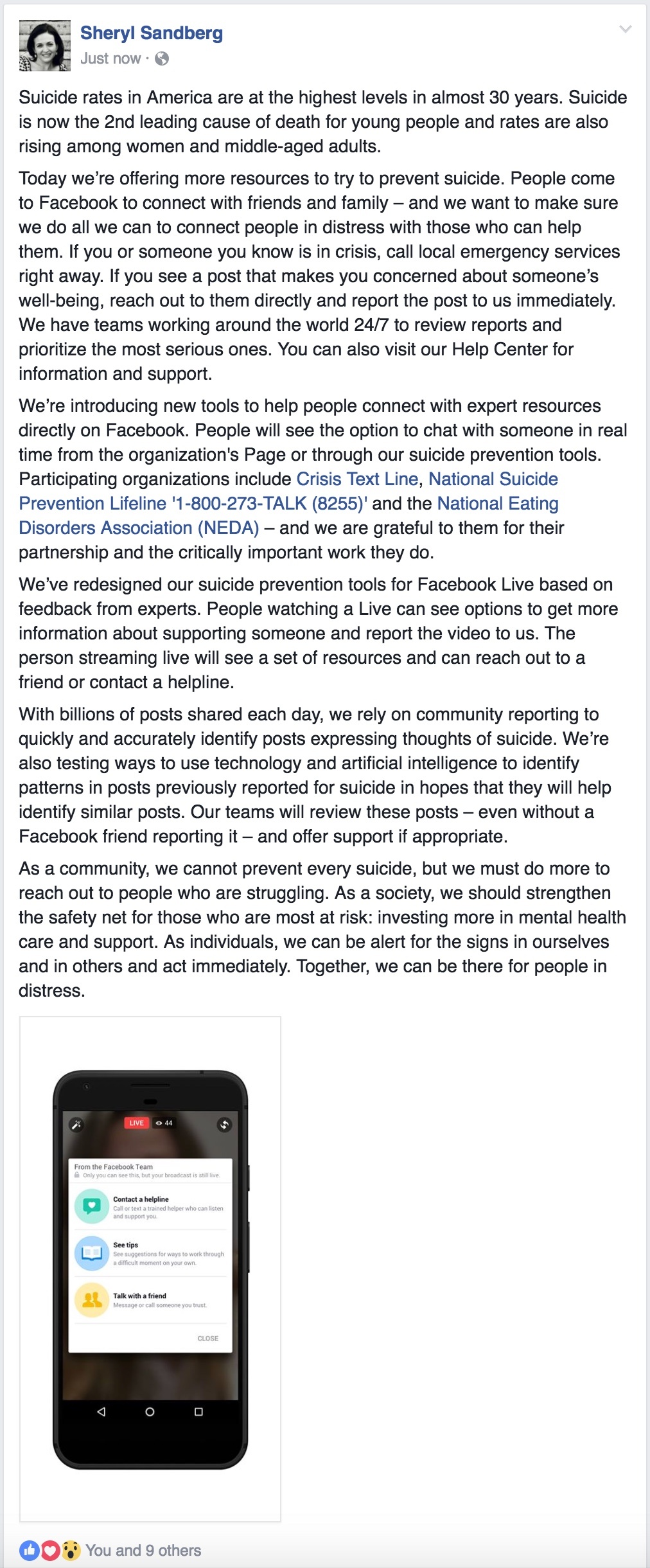Breaking The Habit Of Being Yourself #5001
Podcast: Play in new window | Download (Duration: 1:01:35 — 56.6MB)
Subscribe: Apple Podcasts | Spotify | iHeartRadio | Email | RSS | More

 The other day I stumbled onto this book on Amazon. “Breaking the Habit of Being Yourself: How to Lose Your Mind and Create a New One,” by Dr. Joe Dispenza.
The other day I stumbled onto this book on Amazon. “Breaking the Habit of Being Yourself: How to Lose Your Mind and Create a New One,” by Dr. Joe Dispenza.
Do I really need to read a book on how to lose my mind? Well, maybe so.
It does look like an interesting read. I don’t know Dr. Joe, but whoever helped him title the book deserves big kudos. I’ll argue that the published price is worth it simply based on the brilliance of the title. The sub-title is the one that really grabs me though. I’m quite interested in losing my mind so I can create a new one. It’s that in-between phase that terrifies me though. I’m fearful if I lose the mind I’ve got, I may not get a new one, or my old one back. It sounds like an exercise that could really go badly. Very quickly.
Here’s what the Amazon summary says about the book.
You are not doomed by your genes and hardwired to be a certain way for the rest of your life. A new science is emerging that empowers all human beings to create the reality they choose. In Breaking the Habit of Being Yourself, renowned author, speaker, researcher, and chiropractor Dr. Joe Dispenza combines the fields of quantum physics, neuroscience, brain chemistry, biology, and genetics to show you what is truly possible. Not only will you be given the necessary knowledge to change any aspect of yourself, you will be taught the step-by-step tools to apply what you learn in order to make measurable changes in any area of your life. Dr. Joe demystifies ancient understandings and bridges the gap between science and spirituality. Through his powerful workshops and lectures, thousands of people in 25 different countries have used these principles to change from the inside out. Once you break the habit of being yourself and truly change your mind, your life will never be the same!
Without having read the book I can’t vouch for it, except to brag about the title. And it’s the title that captivates me somewhat. I did go watch his TEDx talk from some years ago. You can go watch it here. One YouTube commenter posted this 2 years ago: “He sounds like ‘Booger’ from Revenge of the Nerds.” 😀 He does!
The guy is clearly smart. Even if he does sound like Booger. And I went down the rabbit hole of watching a number of videos of him speaking. I must say I find him hard to follow, but as one reviewer of the book said, you have to muscle through chapters 1 and 2 to get to chapter 3 where the magic starts to happen. I’m planning to buy the Kindle version and dive into it. So you can likely expect some sort of follow-up after I’ve had time to read it, figure it out and apply it.
Have you ever wanted to be somebody else? Maybe not entirely, but somewhat? I suppose a large percentage of us have, at some point, wished we were more of something, less of something, or just something completely different.
Some people urge us to embrace ourselves, just the way we are. So I guess growth, improvement, and transformation are unimportant. It’s more important for you to have self-awareness and accept yourself just the way you are.
Not.
Dr. Joe approaches the subject of changing your mind from a brain science viewpoint. Learning is forging new synaptic connections, says the doctor. Nerve cells that fire together, wire together. Remembering is maintaining and sustaining those connections. Neuro networks are communities of synaptic connections. You generate more electrical connections in your brain in one day than all the cell phones in the world combined.
Once you understand something intellectually, then you personalize it – you use it – you’ll have a new experience. All of your senses are working together to process the information in your brain. Neurons are connecting and the brain releases a chemical that produces a feeling. That’s how we remember our first kiss. Or some memorable experience. It changes our mind.
Routine lulls our brains to sleep. Extraordinary things can spark a change in our mind. I was in first grade when President Kennedy was assassinated. We got up on the morning of 9/11 to go pick up a new car we purchased. I remember those experiences because my brain was changed by those events (and some others).
I have no idea how many books I’ve read, videos I’ve watched, or audios I’ve listened to about how we think, how we can change, how we can improve. It’s likely been millions of words. Some of them have been produced by self-help gurus. Some have been produced by psychologists, sociologists, neuroscientists and other science-based experts. Others have been produced by business leaders who studied the subjects. And a few by journalists who researched the topics.
My journey may not be typical of yours, but I’ll share it in hopes you can learn something to help yourself. My consumption of self-help books began in high school. The time period likely had much to do with the self-help genre reaching some new heights in the 70’s. The hippie movement, the Vietnam war, the civil rights movement, the psychedelic drug culture, Watergate, fascination with Eastern religions — these were just some of the things happening in the late 60’s and early 70’s. Along the way came things like Transcendental Meditation and Erhard Seminars Training (EST – Werner Hans Erhard was the founder; born John Paul Rosenberg). I was in elementary school and junior high when the generation ahead of me was searching for enlightenment. I was searching for good music and a girlfriend. 😉
I peel all that back to give you the context of the world I grew up in because I strongly believe it impacts not only our worldview but our view of self. We all grow up wondering where or how we fit. And our external world certainly influences that. For some, quite a lot. For others, not as much.
I was driven by a single fascination – human behavior. Yes, I wanted to learn more about my own, but I was a people watcher even as a child. Paying attention, noticing details is just something that came naturally to me. By the time I reached junior high, I had figured out that something might be wrong with me because it was apparent to me that I was different. I saw things others didn’t seem to notice. I thought about things others didn’t seem to consider. And yes, I absolutely went through some periods where I thought it might be nice to just “be like everybody else.”
The biggest driver for me was to better understand myself. And I wanted to figure out how to better harness the power I was convinced was inside each of us. Early on the biggest problem I encountered was the “humanism” perspective of so much of this material. Humanism is defined as “an outlook or system of thought attaching prime importance to human rather than divine or supernatural matters.” I’m unapologetic about my Christian faith so much of this material wasn’t congruent and isn’t congruent with that. God is God. Men aren’t. We’re in control of our choices, our behaviors, and responses. But there is so much we’re not in control of. Early on I felt like much of the self-help material approached the subject with too much of a “you’re in complete control” perspective. Even as a kid I learned personal accountability – we’re responsible for ourselves – but I also learned that many things are beyond our control. Yes, we own our responses to what happens.
Still, I dove into material aimed at higher human performance. Some years ago I even registered that domain, HigherHumanPerformance.com. It goes to my business website, but it speaks to my interest in the topic. My approach, to my own study, has always been holistic in that I’ve not been interested in just being a better business leader or some other singular area. Each of us wears many hats, living many different roles. I’m disinterested in being successful in my career, but failing in my marriage. Or failing as a father. Now, a grandfather. We’re whole, complete human beings. Ideally, we work to elevate our performance and our lives in every area.
Let me drop a real knowledge bomb on you that you may not have considered before…
When You Change Your Mind, The Outside “Real World” Is Unchanged
That’s powerful, true and goes against the whole “law of attraction” mumbo-jumbo that would have us believe we can manifest things in our mind, then the universe will bend to our will or desire. Question: What if you’re manifesting something that is completely the opposite of what I’m manifesting? Who wins? Well, that’s easy really. I do. Because I always win! 😉
It’s as ridiculous as believing the earth is flat. Delusional.
I think the real truth is even more powerful though. That when we change our mind is can powerfully impact our lives while the outside world doesn’t change at all. To me, that’s empowering. Invigorating even. To think that I’m holding myself back because I’m holding onto what Zig Ziglar called “stinking thinking” and that if I can change how I think (what Dr. Joe calls changing our mind), then my outcomes change. No, it doesn’t mean my wildest dreams come true, but they may. In fact, even wilder dreams *may* come true. So much for putting all the stock in setting goals and meticulously planning. Many a famous person has admitted “I never thought this would happen.” They set out pursuing something – maybe being a movie actor, or a musician, or a scientist – and something remarkable happened beyond what they ever envisioned.
That’s because we have to take meaningful action, persist through all the challenges, be open to the opportunities, and…are you ready? Yes, chance happens.
Ecclesiastes 9:11 “I returned, and saw under the sun, that the race is not to the swift, nor the battle to the strong, neither yet bread to the wise, nor yet riches to men of understanding, nor yet favor to men of skill; but time and chance happeneth to them all.”
We want wisdom. We want knowledge. We want to get unstuck. We want forward progress. And there’s every reason to pursue those things. Does it guarantee success? Well, I suppose that depends on how you define success. If by success you mean you’re able to live your life more fully – to live a significant life – then yes, that’s what it means. It doesn’t mean you’ll become a millionaire. Or a movie star. Or a top 10 musician. Because other things are in play. Like your natural aptitude. Like your timing. Like your refusing to quit.
But let’s stay focused on us – and all that activity that goes on in our head. It’s largely about changing our mind. Skepticism and cynicism are often some of the major barriers to changing our mind. In a word, doubt!
I confess that I’ve got a healthy dose. Sometimes perhaps it’s an unhealthy dose. Where is the line between naivete and doubt? I’m unsure, but I am sure that just shutting down new ideas and thoughts isn’t likely the wise route. It’s absolutely the sure-fire way to avoid changing your mind.
You know part of the problem for me with the self-help guru crowd? The syndicate that seemed to exist. That is, the usual suspects hawked each other. They wrote forwards in books for one another. They did reviews. And I found many of them corny and trite. Others, I found just outrageous with their talk of “miracles” happening in their lives – and urging their readers to embrace their principles so they could experience miracles in their own lives. Quite a few of them incorporated spiritual or mystical teaching that was off-putting to me. I had the Bible for that.
Which is why this book – and many others like it – really became more of my focus once I entered the business world. In my 20’s the focus turned to leadership, helping others achieve, serving others, developing high performing cultures, and I immersed myself in biographies and collections of stories about such things. Additionally, I was mostly drawn to neuroscientists. Authors like John Medina and Steven Pinker got far more of my attention than the quotable platform performers who sold millions of self-help/motivational books.
I think part of my doubt was based on how I have always viewed “motivation” and “inspiration.” As a young person, I had listened to plenty of cassettes by self-help gurus and found most of the material devoid of any real lasting impact. I concluded that “inspiration” was really what these folks were selling and it’s a very short-lived proposition. That’s why you can attend some seminar on a Tuesday, then by Thursday (or likely Wednesday), your life looks and feels just like it did. Inspiration can feel good in the moment, but it doesn’t last.
As for motivation, I learned many years ago that motivation is the energy we each bring with us to get the job done. Whatever the “job” is. If you don’t have the energy to get out of bed in the morning, that’s on you. I may be able to inspire you to get out of bed, but your motivation to stay in bed is likely going to cause you to get up, walk to the kitchen, eat a donut and go back to bed.
I wanted more lasting impact. Bigger return on my time investment (to read the book, watch the video or listen to the audio). Sometimes inspiration was great. But overall, it was never what I most craved. I craved insights and knowledge. Something I simply hadn’t yet learned.
That requires an openness. Open to soberly consider what’s being taught. Not a naive buy-in to everything you read, see or hear. But a willingness to consider it, debate it, understand it and decide for myself if I wanted to believe it. Or not.
Just because I didn’t know it before…or just because I hadn’t embraced the idea ealier…didn’t make new ideas or information invalid. I know people who have an intellectual arrogance, thinking they already have it all figured out. They spurn new ideas. They rebuff new ideas. Maybe you’re like that, thinking that all this talk about brains, thinking, being yourself is hocus-pocus voodoo. Or worse. If so, I’m sorry for you because you had to learn language. And math. And geography. And so much more.
Harvard psychologist Steven Pinker knows what many of us intuitively know. We know what we know. We can’t unknow it. There’s no turning back the clock to the time before we knew it. It can negatively impact our communication with people who may not know what we know. That doesn’t mean we’re smarter than them. It just means we’ve learned something they may have yet to learn. But there’s another problem — our internal communication. The way we talk to ourselves. The way we approach things we don’t yet know.
That’s where our doubt can cripple our progress. You buy some ideas more easily than others. Why?
Many factors influence you. Your parents’ viewpoint. Their worldview. Your teachers, friends, enemies…all the people who have entered your life along the way. Your socio-economic standing while growing up. Your reality. It became what you knew to be true. How can you argue with reality? You can’t.
What you can do – what we each must do – is expand that reality. Go back to your childhood. Remember the house. And the neighborhood. Now, do you remember that neighborhood where the really rich folks lived? Sure you do. It wasn’t named Neverland, was it? Peter Pan and Tinkerbell didn’t live there, did they? No. Real people who had real children, the same age as you, lived there. But boy did they live differently than you and your family.
Did your reality invalidate their reality? Of course not. Was the universe just more kind toward those families than yours? Was your family marked by some secret vote that took place, ensuring they wouldn’t be able to afford to live in that neighborhood? You know that’s ridiculous.
Yet, as time has gone by, you’ve embraced those kinds of thoughts and they’ve likely fueled your beliefs about success, achievement and rewards. You think what you think. That’s just one example of how we can likely improve ourselves by breaking the habit of being yourself.
It’s not about being – or trying to be – somebody other than who you genuinely are. Well, unless of course, you’re a jerk. Then you definitely need to become somebody other than who you are. No, this is all about changing our mind so we can be better. As always, it’s about growth, improvement, and transformation. G.I.T.
Happiness isn’t a great barometer. Drunks, addicts, thieves, and murderers can be happy with themselves and their lives. That doesn’t mean they should remain as they are, and continue thinking the way they do. There’s clearly more to it.
“I’m happy with my life,” is something said by people who resist change or improvement. Transformation? That’s entirely out of the question for them.
So let’s presuppose you’re living a decent moral, ethical life. And let’s assume you’re not a miserable human being…we’ll assume you’re a good person who treats others well. This is hard stuff. Just a day ago I was sent to fetch a big takeout order from a local restaurant for my wife’s sewing guild. They were gathered at a class, learning some new techniques from a woman they flew into town to teach. I volunteered to pick up the lunch order and bring it to them so they didn’t have to pay an Uber driver to do it.
I walk in and it’s a neat, little clean joint where you walk up to the counter to order. I’m waiting for them to get the order all together and notice an older lady by herself standing at the counter giving the young lady behind the counter her order. She’d never been to this place before so she had questions. Understandable. The employee was politely answering her questions and telling her about various items on the menu. I couldn’t hear everything said, but at some point, the customer grew irritated and blurted out, “Didn’t you hear me? That’s what I said.” The employee apologized and tried to help the customer. The old lady wasn’t about to calm down though. Her jerk gene was in full bloom. He grabbed a cup, given to her by the employee after she paid and stormed off, muttering “Unbelievable” as she walked past me. I wanted to say, “Yes, you are unbelievable, grouch!” Better judgment prevailed. I just shot a glance at the employee, rolled by eyes as to say, “She’s a jerk, let it go.” I could tell the employee was upset, but other customers were in line so I wasn’t able to approach her and tell her what I wanted to tell her. “Forget it. Keep your head up. You’re doing fine.”
I don’t know what’s going on with that lady, but let’s extend grace and assume she was having a bad day. Let’s assume whatever we want to give her the benefit of every doubt. There is still NO EXCUSE for being hateful. She’s without excuse! And I rather doubt she’s interested in growth, improvement or transformation. Folks like that are mostly interested in the rest of us growing, improving and transforming so their lives can be more convenient. So today’s show – and all my shows – are aimed at myself. And you. Not her. Or people like her.
Optimism Wins.
Can we learn more about ourselves and how our brains work? Sure. Can we approach such study with optimism believing that we can grow, improve and transform? Of course. In seconds we can make up our minds that we’re not going to shut down new knowledge, new ideas or new insights. Instead, we’re going to open ourselves to the possibility – not necessarily the fact (at least not until we’ve had time to process it and weigh it) – that we may have had it wrong all along.
What if it’s not as it seems?
Have you ever been caught in an incorrect assumption? Sure, we’ve all done it. You thought you had it all figured out, only to find out you were wrong about some very critical elements. And getting those elements corrected changed everything!
That’s how changing your mind works. Except it’s more brain science than you may realize. Or know.
What with all the electrical and chemical activity going on in our brain…we tend to think about our hardwiring. But I’ve learned our hard wiring isn’t so hard after all. Unless we stubbornly insist on keeping it that way. Truth is, our brains are pliable and open to new connections. And when we incorporate them into our thinking it changes things. It literally changes our mind by developing new connections and putting us in a completely different state of mind as we become aware of things we didn’t know. As our awareness changes – our mind changes – then guess what else changes?
What we do. What we decide.
And that leads to the results and outcomes changing, too.
Again, the world didn’t change. The market didn’t bend to our new will. The universe didn’t suddenly get the memo about what we want. We changed. We changed our mind. And that changed our approach and our actions. In short, by changing our mind we incorporated many other changes in our life. Changes that brought about new results that we hadn’t experienced before because we’re now thinking differently than we’ve ever thought before. We’re believing things we didn’t believe.
We’ve moved from that old neighborhood where we grew up and moved into that nicer neighborhood. What was unreal to us before is now very real. Like the person earns six-figures believes earning twice that is possible, we believe things are true and possible that earlier we may have disbelieved.
Self-Limiting Beliefs Are The Concrete Shoes Weighing Us Down
By now you realize we’re all living in The Matrix. We’re all the Keymaker. We can unlock the doors of our brain. And yes, it can change things for us.
It’s not a miracle. It won’t change EVERYTHING. But it’ll change enough to give us a completely different outcome. Changing our mind will open doors through which we can find different (improved) experiences.
Again, the real world – the outside world – doesn’t change. But it doesn’t need to change. By changing our mind we figure out how to best operate in the world for our best outcomes. Our progress may be small, or great. We continue to change our mind and figure things out a bit better. Or, we remain stuck, change nothing and embrace whining and complaining. That often becomes easier…and feels more comfortable because that’s where the hoard lives. There’s something to being part of the hoard.
Complaining Doesn’t Work…Except To Destroy You
Pulling away from the hoard demands changing our mind. It means stepping out from the line. It feels risky. Conformity feels safer. And maybe it is. But it’s also unfulfilling, unrewarding, limiting and to many of us, frustrating.
What Are You Going To Do Now?
Boil it down to 2 words and you’ve got one of the best questions we can ask ourselves in response to anything – good, bad or indifferent.
Now what?
The question is only as powerful as the answer. If we answer, “Now what?” with a very different answer, sparking a very different belief and action, then it can’t be helped that we’ll get a different answer. A different result.
Our hope, a better result!
It’s not so much about breaking the habit of being yourself as it’s about changing our mind so we can improve who we are.


How Can You Help The Podcast?
- Subscribe at iTunes | Stitcher
- Leave us a review at iTunes
- Pick your favorite way to support us financially
- Join the conversation at our Facebook group
- Tell your friends. Promote the shows on social media.
Breaking The Habit Of Being Yourself #5001 Read More »






